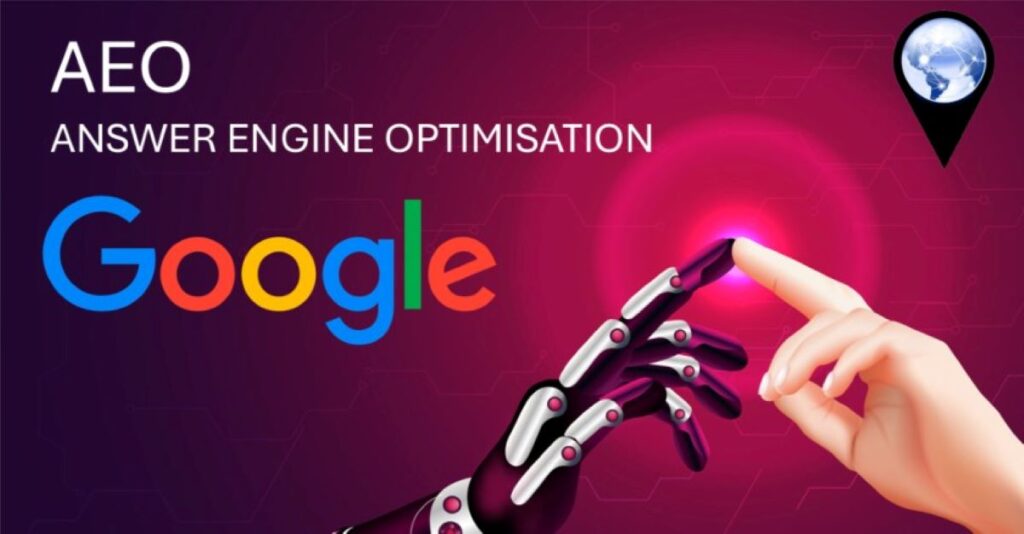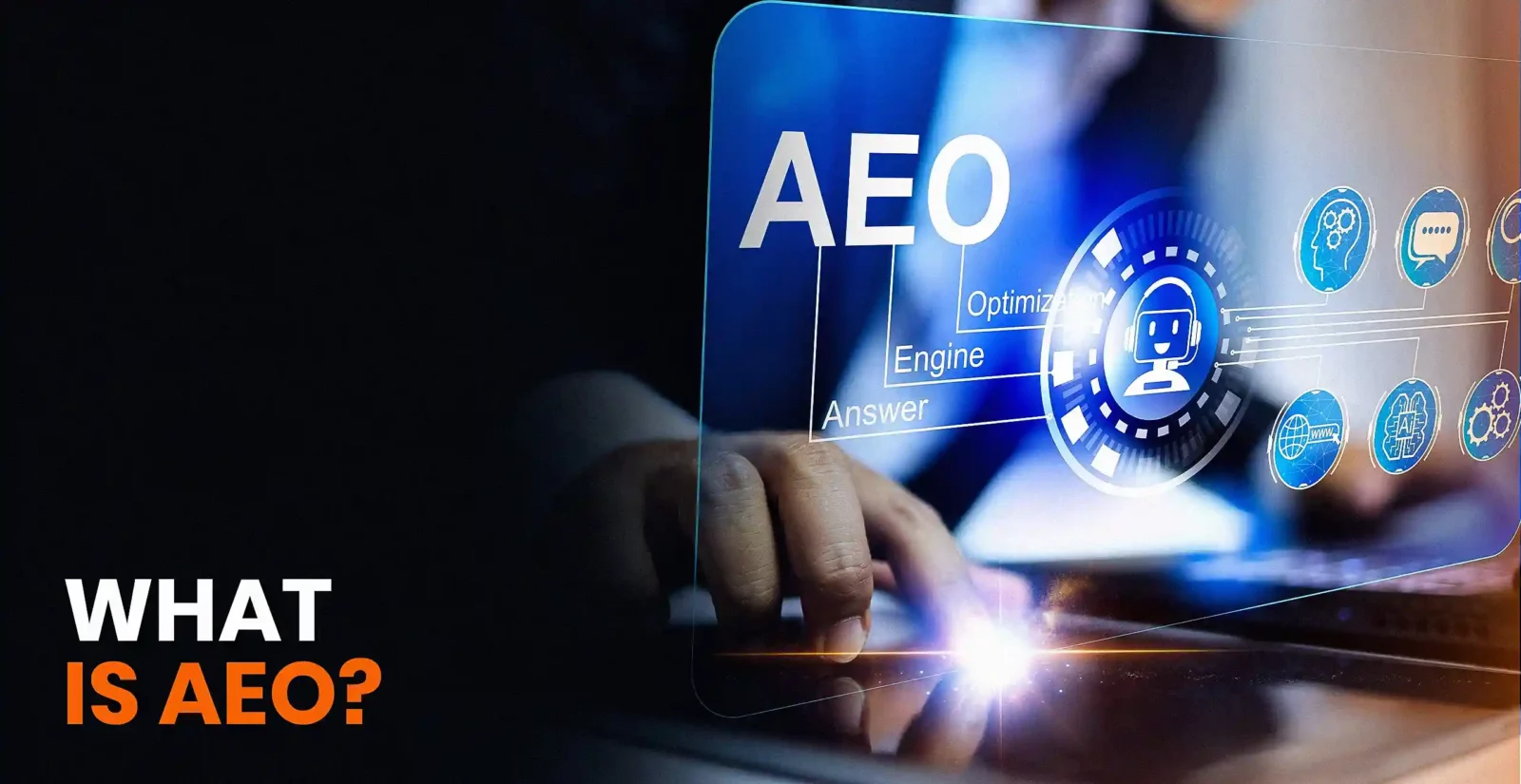What is Answer Engine Optimisation (AEO) and How Does It Differ from Traditional SEO?
AEO Agency Sydney specialises in Answer Engine Optimisation, targeting AI systems that deliver direct answers to user queries through featured snippets, voice assistants, and chatbots. Rather than aiming for page rankings, AEO positions your content as the source AI platforms quote when responding to questions.
Traditional SEO focuses on climbing search engine results pages to drive clicks to your website. An AEO Agency Sydney helps businesses adapt to the shift in modern search behaviour, ensuring content is optimised to appear as the direct answer in AI-driven results. Users increasingly receive answers without clicking through to any site, making this approach essential for visibility in zero-click searches.
The distinction becomes critical with zero-click searches, where Google displays complete answers directly on the results page. Voice search through Siri, Alexa, or Google Assistant amplifies this trend, reading single responses aloud instead of offering multiple links.
Key differences:
- Traditional SEO = Ranking position on SERPs
- Answer Engine Optimisation = Being the answer AI systems cite
- Traditional SEO = Click-through traffic
- AEO = Brand visibility in zero-click results
AI-driven search demands content structured specifically for machine interpretation—concise, authoritative answers that algorithms can confidently extract and present to users.
Why is AEO Becoming Essential for Australian Businesses?
Australian consumers are rapidly shifting towards voice-activated technology, with over 6.5 million smart speakers now in Australian homes. This surge in voice assistant adoption directly impacts how potential customers discover and engage with local businesses.
The AEO importance Australia landscape reflects a fundamental change in search behaviour. When Australians ask Siri “Where’s the best coffee near me?” or query Alexa about “plumbers in Sydney,” they expect immediate, spoken answers rather than scrolling through search results. These voice search Australia interactions bypass traditional website visits entirely, making visibility in AI-generated responses critical for business survival.
Small and local enterprises benefit most from local business optimisation through AEO strategies:
- Immediate visibility in voice search results without competing against large corporations’ advertising budgets
- Higher conversion rates from users seeking instant solutions to local service needs
- Enhanced trust when AI assistants cite your business as the authoritative answer
- Multi-platform presence across smart speakers, in-car systems, and mobile assistants
Businesses that delay AEO adoption risk becoming invisible to the growing segment of consumers who never click past AI-provided answers.
How Do AI-Powered Platforms Influence Search Behaviour in Australia?
AI search platforms in Australia are fundamentally changing how users discover information and businesses. Google Featured Snippets now appear in approximately 12% of search queries, providing instant answers without requiring clicks, while Bing AI delivers conversational responses that synthesise multiple sources into coherent narratives.
These platforms have shifted user expectations from browsing multiple links to receiving immediate, authoritative answers. When Australians ask their devices “best plumber near me” or “Sydney restaurant open now,” voice assistants like Siri and Google Assistant pull structured data from optimised business profiles and schema-marked content to deliver spoken recommendations.
The impact on local business discovery is particularly pronounced:
- Voice-first queries prioritise businesses with complete Google Business Profiles and FAQ-structured content
- Zero-click results mean users find phone numbers, addresses, and opening hours without visiting websites
- Conversational search patterns favour natural language content over keyword-stuffed pages
Australian consumers increasingly trust these AI-curated answers, making visibility in featured snippets and voice results critical for capturing local market attention.
What Strategies Are Involved in Effective Answer Engine Optimisation?
Effective AEO strategies centre on structuring content to match how AI systems extract and present information. Clear, question-based headings paired with 40-60 word answers allow AI platforms to quickly identify relevant responses. FAQ sections and Q&A formats work particularly well for this approach.
Schema markup forms the technical backbone of AEO implementation. Three critical types include:
- FAQPage schema for question-answer content
- HowTo schema for step-by-step guides
- LocalBusiness schema for Australian service providers
Natural language processing optimisation requires writing conversationally rather than keyword-stuffing. Content should mirror how Australians actually speak when asking questions through voice assistants. This means using colloquial phrases, local terminology, and addressing queries in complete, natural sentences that AI systems can parse and understand contextually.
How Can Australian Businesses Implement AEO to Enhance Their Online Visibility?
Implementing AEO Australia starts with a comprehensive content audit for FAQs that identifies the most common questions your customers ask. Review support tickets, social media comments, and search query data to uncover patterns in customer inquiries that deserve direct, structured answers.
Structure each answer within 40-60 words to match the format AI systems prefer when extracting featured snippets. This word count provides enough detail to be useful whilst remaining concise enough for voice assistants to read aloud naturally. Format these answers using question-based H2 headings followed by clear, direct responses in the opening sentences.
Mobile-friendly pages are non-negotiable for AEO success, as voice searches predominantly occur on mobile devices. Australian businesses must prioritise:
- Page load speeds under 3 seconds
- Responsive design that adapts to all screen sizes
- Accessible navigation for users and AI crawlers
- Clean code structure that search engines parse easily
Test your site’s mobile performance using Google’s Mobile-Friendly Test and PageSpeed Insights to identify technical barriers preventing AI systems from efficiently extracting your content.

What Role Does E-E-A-T Play in Building Content Authority for AEO?
E-E-A-T principles form the foundation of content authority AEO by demonstrating your business’s credibility to AI systems. Google’s framework evaluates four core elements: Expertise (subject matter knowledge), Experience (first-hand involvement), Authoritativeness (industry recognition), and Trustworthiness (accuracy and transparency).
AI-powered answer engines prioritise sources with strong trustworthiness online signals when selecting content for featured snippets and voice responses. Businesses that showcase author credentials, publish original research, maintain updated information, and display clear contact details signal reliability to these systems.
Building E-E-A-T for AEO requires:
- Author bylines with professional qualifications and industry experience
- Customer testimonials and verified reviews demonstrating real-world results
- Citations from reputable sources backing factual claims
- Regular content updates reflecting current industry standards
- Transparent business information including physical addresses and certifications
Incorporating these elements not only enhances the E-E-A-T profile but also aligns with the concept of people-first content, which focuses on creating valuable content for users rather than just for search engines. AI systems scan these trust indicators when determining which content deserves citation in answer boxes. Businesses with established E-E-A-T profiles consistently appear in AI-generated responses, capturing visibility across voice assistants and chatbot platforms where traditional ranking factors hold less influence.
How Does AEO Complement Traditional SEO and Emerging GEO Techniques?
AEO and traditional SEO work together rather than competing—SEO drives organic traffic through search rankings whilst AEO captures immediate answers through featured snippets and voice responses. The AEO vs SEO synergy becomes evident when businesses optimise for both: SEO builds authority through backlinks and keyword rankings, whilst AEO structures that authority into concise, AI-digestible answers.
Generative Engine Optimisation (GEO) represents the next evolution, targeting AI systems like ChatGPT and Google’s AI Overviews that synthesise information from multiple sources into narrative responses. Unlike AEO’s focus on single-answer snippets, GEO optimises content for inclusion within AI-generated summaries that blend facts, context, and recommendations. Visit https://www.nsw.gov.au/visiting-and-exploring-nsw/nsw-events/ai-powered-search-engine-optimisation-seo to get more about AI powered SEO.
Australian businesses benefit from implementing all three approaches simultaneously:
- Traditional SEO maintains visibility in standard search results
- AEO secures featured snippet positions and voice search responses
- GEO ensures brand mentions within AI-generated narratives
This integrated strategy positions businesses across every search interface—from traditional browsers to conversational AI platforms—maximising visibility as search technology evolves.
What Tools and Metrics Should Australian Businesses Use to Monitor AEO Performance?
Google Search Console for AEO provides the foundation for tracking answer engine performance. The Performance report reveals which queries trigger featured snippets, displaying impression and click data specifically for position zero results. Filter by “Search Appearance” to isolate featured snippet performance and identify content that already captures direct answers.
Australian businesses need AEO analytics tools Australia that extend beyond standard metrics:
- AlsoAsked.com maps question clusters to reveal related queries your target audience asks
- SEMrush Position Tracking monitors featured snippet ownership and identifies opportunities where competitors hold answer boxes
- AnswerThePublic uncovers voice search patterns and question-based queries specific to Australian markets
- Schema.org Validator ensures structured data implementation meets technical requirements for AI parsing
Track these critical metrics:
- Featured snippet impression share versus competitors
- Click-through rates for answer box appearances
- Voice search query volumes through Google Analytics
- Schema markup validation errors
- Average answer length performance (40-60 word sweet spot)
Regular audits using these platforms reveal which content formats AI systems prefer, allowing continuous refinement of your answer engine strategy.
Which Services Do Sydney-Based AEO Agencies Offer to Support Local Businesses?
Sydney AEO agency services focus on transforming traditional web content into AI-ready formats that search engines prioritise. Agencies provide tailored consulting to audit existing content, identifying gaps where customer questions remain unanswered and restructuring information into concise, direct responses that AI systems can extract and display.
Schema markup implementation is a core technical service, with specialists adding structured data types like FAQPage, HowTo, and LocalBusiness schemas that help search engines understand …

